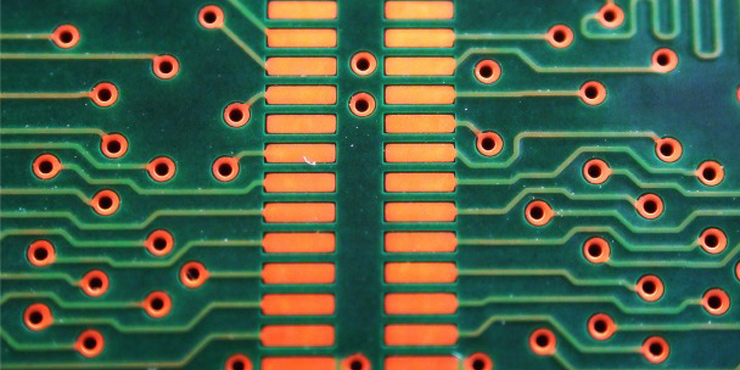Last December, a team of Swiss researchers developed and successfully tested a prototype of a microchip that will allow the government to nestle flexible GPS microchips in the folds of your brain as an infant and scare you into servitude, maybe. The chip, made out of molybdenite, is an abundant, naturally occurring, and highly conductive metal. Molybdenite (MoS2) definitely holds some advantages over silicon. For starters, it can be made much thinner, “three atoms thin,” whereas silicon can only be whittled down to two nanometers thin as it tends to oxidize at skinnier widths and lose its electronic properties. And because molybdenite can be made so svelte, it also is bendable, thus opening the both creepy and exciting doorway to flexible electronics – electronics that can be molded to your body to “interface directly with [your] tissue!”
In other words, there really could be microchips implanted in your body in the not so distant hover-car future. This is somewhat reminiscent of a scene in the movie Total Recall where Arnold Schwarzenegger’s character realizes he’s being bugged by the Man (the Martian Man) and reaches into his brain with heavy duty tweezers to pull out a flashing, golfball-sized chip out of his nose. Thankfully, there’s no need to worry about the government or third party hacksters controlling our minds or stealing our identities yet: molybdenite chipmaking still harbors a few caveats. Molybdenite is about 900 times less abundant than silicon, which is the second most plentiful element in the Earth’s crust. (Chemicool) And by virtue of silicon’s seniority in the tech realm, there are increasingly more efficient known methods of purifying it to the electronic grade (99.9999999%), a couple of them being low carbon emission procedures. After purification, the waste silicon that doesn’t meet the cut for use in semiconductors is shipped off to solar panel manufacturers as feedstock for their solar cells. This means that the solar industry depends, in part, on the production of electronic grade silicon.
While molybdenite may not totally replace silicon in the future, it still promises the microchip industry some innovative thrills. And paranoid predictions aside, we can hope for the world’s squadrons of genius scientists to develop some sustainable ways to incorporate the metal in semiconductor technology so we can reap all the scary/cool benefits from flexible electronics.


Comments are closed.